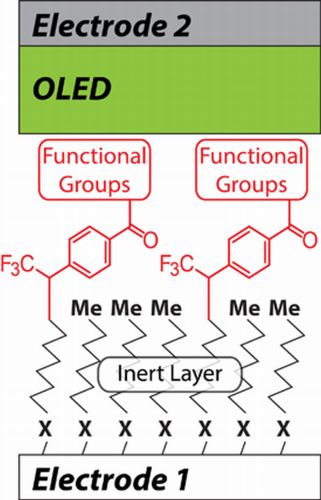Until now, it was difficult to charge particles at molecular scale and hence developing circuits at microscopic level has always presented a huge challenge. However, Alexander Shestopalov from University of Rochester has crossed the huddle making a step closer to the fabrication of microscopically small circuit.
He powered an organic light-emitting diode (OLED) with a nanoscale circuitry in where he coupled the positive and negative electrodes with one-molecule thin sheet of organic material. Experimental trials and errors have proved that it’s impossible to control current passing through such a single layer of the organic material hence, he added an inert or another non-reactive layer.
The Dual Layer Concept
Layer on the top acts like a wire conducting the charges while the lower inactive layer acts as a casing for the upper electronic wire, thus like an insulator it keeps the live wires away from the external environment. Since the lower layer is inert by nature hence does not react with the overlapping layer therefore its electronic property is nullified while the top layer determines the electronic properties of the component.
Interference with the upper sheet was removed by slotting in a sheet of inactive molecules, consequent upon which, exact amount of charge transfer was achieved. This dual layer concept also helped Shestopalov in gaining control over the charge transfer between the molecules. He demonstrated that by maneuvering the functional groups, he was able to alter the rate with which the flow of current passed between the electrodes and the upper layer of organic molecules.
Molecular Level Variations
At molecular level, there are contrasting functional groups, some speed up the charge transfer while others show sluggish in the rate of transfer. For instance, in order to preserve a particular amount of luminescence, OLED require a faster charge transfer while for delicate or inconsistent procedures in biomedical injection device need a slow-moving charge transfer.
No doubts Shestopalov’s effort is a breakthrough but still some amount of research is to done before the practical viability of bi-layer molecular electronic devices is done. Secondly and an equally important factor is its durability. After all, in order to sustain at high temperatures and when longevity is also at stake, a lot of effort is to be required which of course will take a lot of time relatively.
Source: University of Rochester




